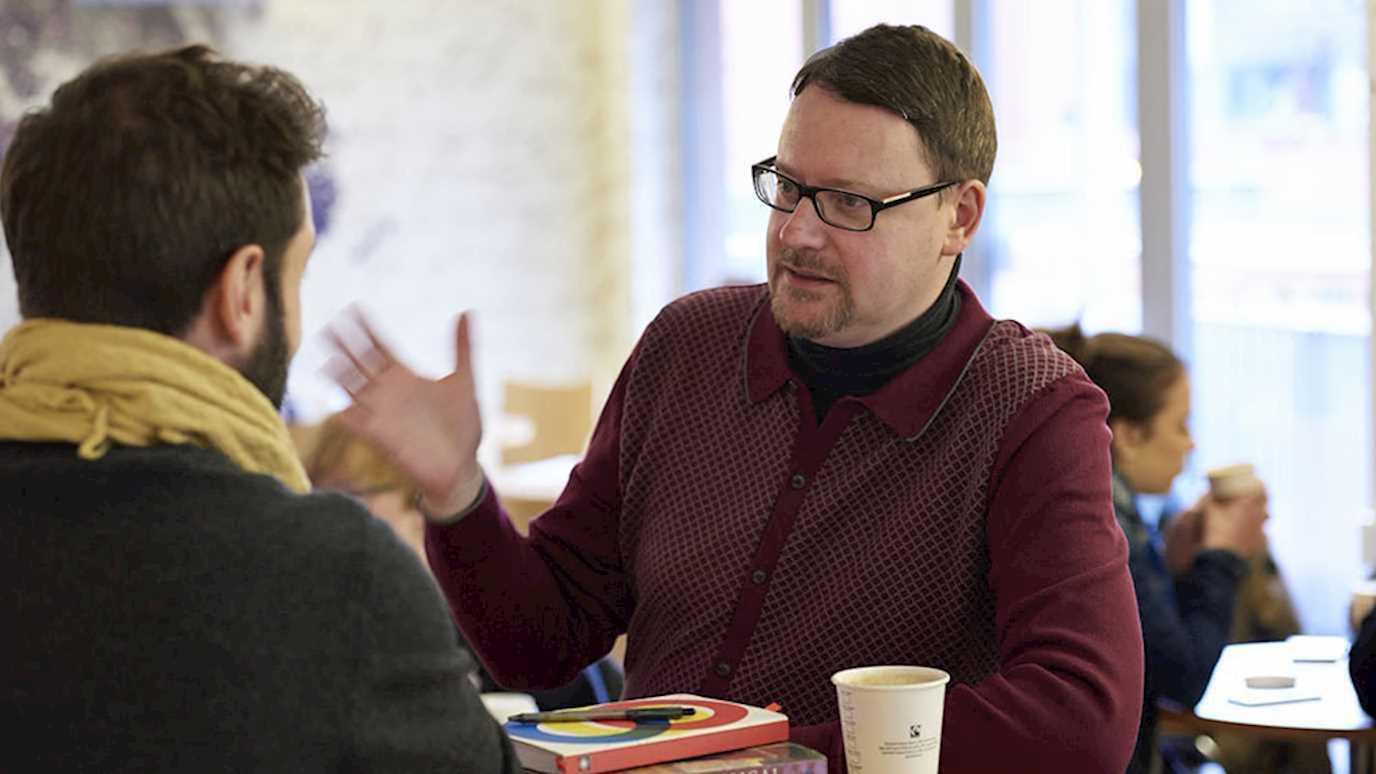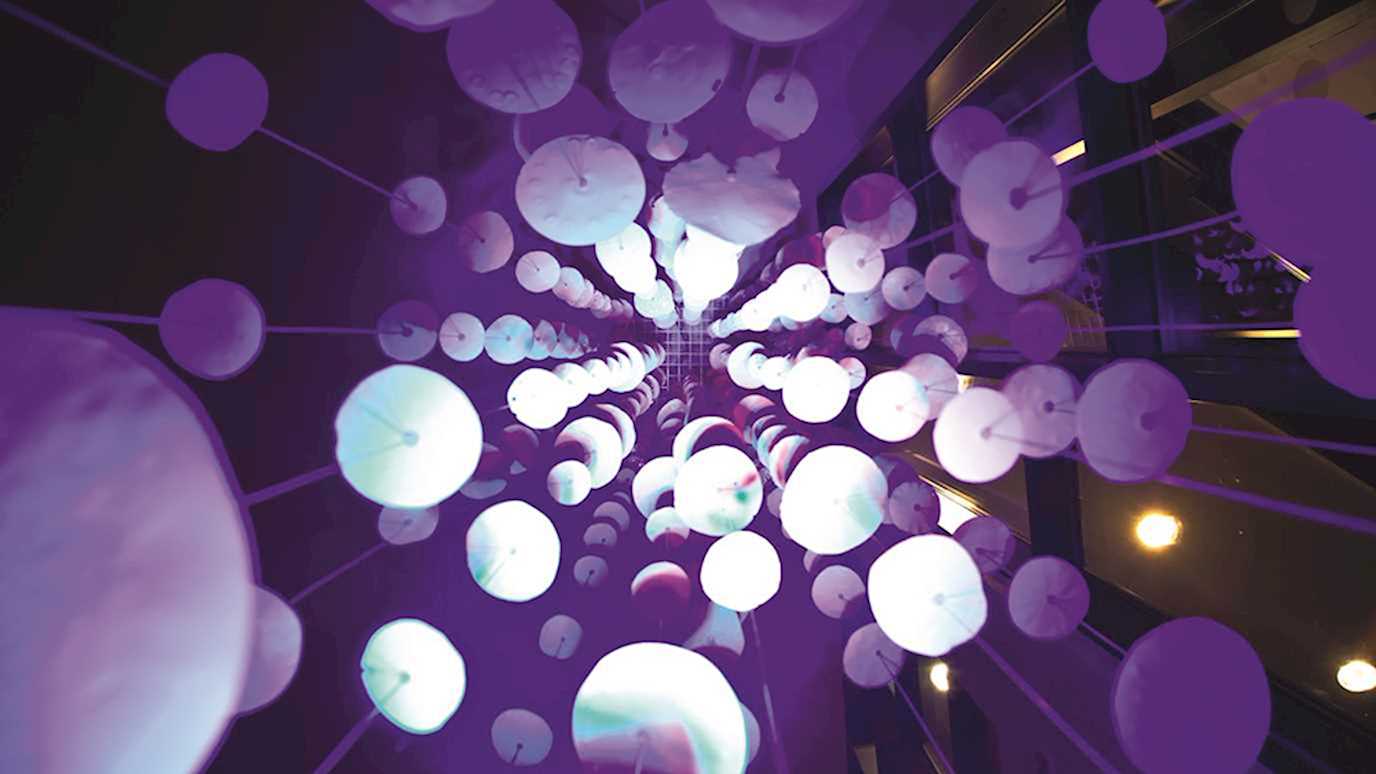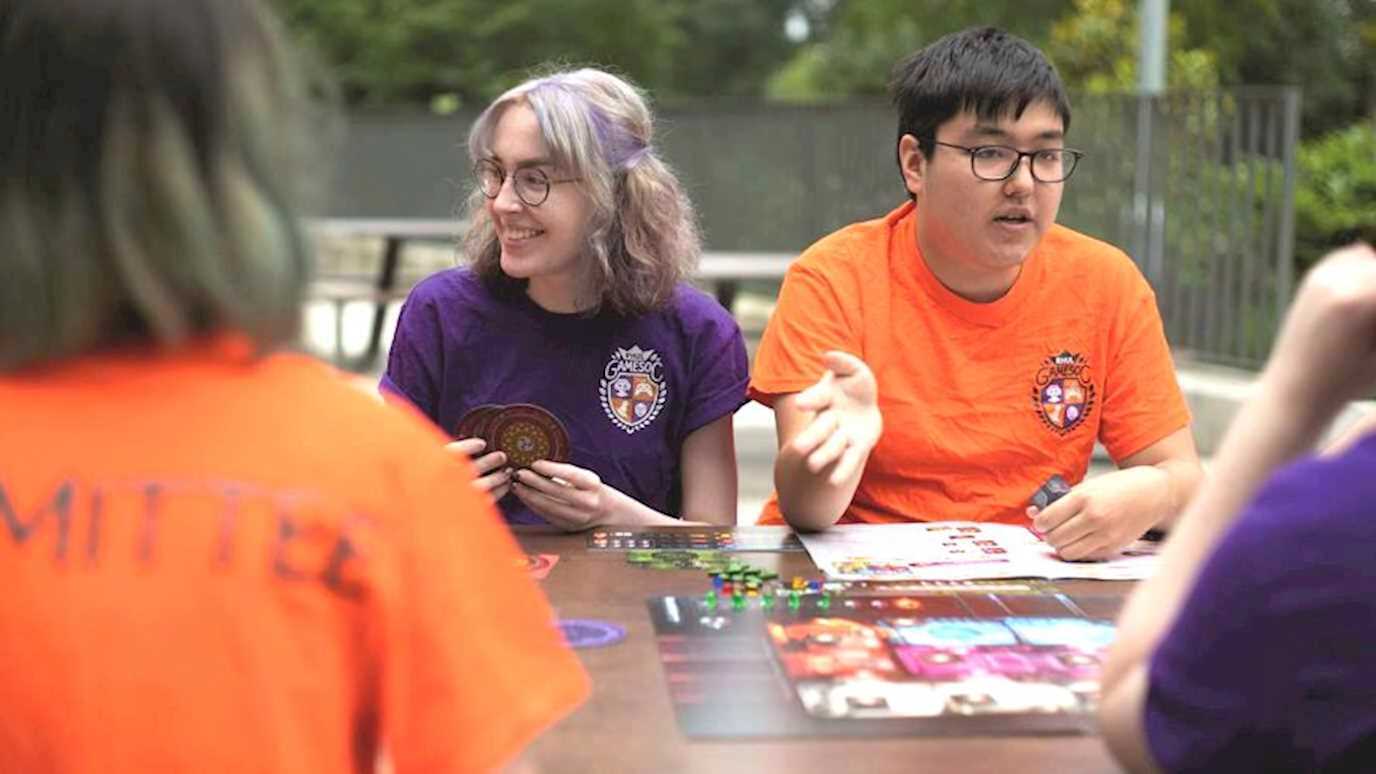The Quantum Materials Group study fundamental problems including magnetic monopoles, quantum spin liquids, superconductivity and quantum criticality, as well as new materials for practical applications such as thermoelectric, battery and spintronic materials.
About
Experimental projects use neutron and synchrotron x-ray scattering at international facilities, including ISIS, Diamond, ILL, ESRF and FRMII, as well as extensive in-house equipment for measurements under extreme conditions and for materials discovery.We perform first principles density functional calculations using computer clusters in Royal Holloway and SCARFat STFC, as well as the EPSRC’s national High Performance Computer facility ARCHER.
Research Facilities:
The neutron scattering experiments are performed using the ISIS Facility on the nearby Harwell Campus, the Institut Laue-Langevin in Grenoble, and FRM II in Munich.
X-ray measurements are performed using the Diamond Light Source, the European Synchrotron Radiation Facility in Grenoble, as well as in-house.
Research
Defects and frustrated magnetism:
The frustrated geometry of the pyrochlore lattice of corner-sharing tetrahedra, and the crystal electric field effects that determine the single-ion anisotropy, are responsible in great part for spectacular phenomena including, for example, fractionalization, topological order and emergent magnetic monopoles in the classical spin ices, and the hotly debated spin liquid behaviour of their quantum analogues. We are focusing our research on the role of structural defects on the Physics of frustrated magnets. We have discovered that structural disorder is responsible for the magnetic residual resistance that controls magnetic monopole dynamics at sub-Kelvin temperatures, and in some cases selects the magnetic ground state. By controlling the introduction of structural defects it is possible to tune to a true quantum spin liquid with long-range entanglement. We are able to grow large single crystals to study their defect structures using diffuse neutron scattering, and to determine their spin correlations using polarised neutron scattering. The measurements are supported by first principles density functional theory and Monte Carlo simulations.
New thermoelectric materials:
Thermoelectric devices have the potential to contribute towards the low-carbon economy through, for example, the conversion of waste heat in car exhausts into useful power, and the cooling of hot spots on computer chips using solid state refrigerators. The efficiency of operation of a thermoelectric device is usually measured by its “figure of merit” ZT = TS2σ/κ, a dimensionless number proportional to the square of the Seebeck coefficient, S, and to the ratio (σ/κ) of the electrical to the thermal conductivities. We grow single crystals of new thermoelectric materials and measure their structures and physical properties in house. We investigate the mechanism of the transport of heat through studies of the phonon dispersion using momentum-resolved spectroscopy, and we compare our results with density functional calculations of σ, κ and S.
Sodium-ion battery materials:
High performance batteries based on the movement of lithium ions in lithium cobaltate have made possible a revolution in mobile electronic technology, from laptops to mobile phones.
The demand for energy storage is expected to increase dramatically due to the introduction of electric vehicles and the need for load levelling in the renewables industries. However, the scarcity of lithium has led to intense interest in sodium-ion batteries. We study single crystals of sodium-ion battery materials using x-ray diffraction and quasi-elastic neutron scattering in order to see experimentally the hopping of diffusing sodium ions. We compare our results with ab initio Monte Carlo simulations of the diffusion process. Understanding the diffusion mechanism on the microscopic scale will enable rapid charging for high power applications, and limit degradation during cycling in the next generation of sodium-ion battery materials.
Magnetic quantum criticality and superconductivity of Fe-based compounds
Unconventional and high-temperature superconductivity is often found in materials near continuous magnetic phase transitions. Associated divergences in the materials’ magnetic susceptibility are connected with an enhancement of spin fluctuations that can enable the formation of Cooper pairs. Many Fe-based superconductors show this proximity of high-temperature superconductivity and magnetic phase transitions. In addition, their phase diagrams often feature structural phase transitions. We have been exploring structural effects on the magnetic and superconducting phase diagrams by pressure tuning of selected 122 compounds using thermodynamic, magnetic, and synchrotron diffraction measurements in collaboration with Diamond Light Source.
We are also studying other Fe based compounds, in which the magnetic fluctuations that are potentially so important in the formation of unconventional superconductivity can be studied in isolation. Magnetic fluctuations near a continuous ferromagnetic phase transitions typically lead to an instability of the associated low-temperature quantum critical point. In NbFe2, we are exploring the masking of its ferromagnetic quantum critical point by an emergent spin-density-wave phase using unpolarised and polarised neutron diffraction and spectroscopy.
|
|
|
Novel states of electronic matter
Strong electronic correlations can cause the emergence of novel electronic matter. Examples include nematicity, skyrmion phases, the spin liquid, topological insulating or superconducting states. A long-standing mystery in this area has been the nature of the so-called 'hidden order' phase in the heavy-fermion compound URu2Si2. The onset of the hidden order phase is signalled by a large peak in the specific heat. Assuming antiferromagnetic order the ordered moment is expected to be 0.4 B per U atom. However, only a sample dependent tiny average moment of less than 0.04 B per U atom has been found in experiment. If tuned by hydrostatic pressure, URu2Si2 maintains its peak in the specific heat but develops the expected size of magnetic order. Using the technique of neutron Larmor diffraction we have mapped out the phase diagram of URu2Si2 and shown that any residual magnetic moment in the hidden-order phase can be understood to arise from a small volume fraction in the antiferromagnetic state due to local lattice distortions. This reinforces the notion that the hidden-order state is a much more exotic new state of electronic matter and we have been investigating its low energy excitations using neutron spectroscopy.
|
|
|
Members
Faculty:
| Professor Jon Goff | Professor |
| Professor Keith Refson | Professor |
| Dr Philipp Niklowitz | Lecturer |
| Dr Uthay Sivaperumal | Senior Research Officer |
Students:
| Tim Lehner | PhD Student |
| Marijn Lucas | PhD Student |
| Joseph Blake | PhD Student |
| Kamil Domosud | PhD Student |
| Sercan Arslan | PhD Student |
| Giri Mani | PhD Student |
| Yusuf Aziz | PhD Student |
Alumni:
| Dr David Bowman | PhD 2018 |
| Dr James Poulten | PhD 2018 |
| Dr Vincent Sacksteder | PDRA 2015-2018 |
| Dr Eron Cemal | PhD 2016 |
| Dr Terrence Giles | PhD 2016 |
| Dr Toby Willis | PhD 2016 |
| Dr Monika Gamza | PDRA 2013-2016 |
| Dr Daniel Porter | PDRA 2012-2015 |
| Dr David Voneshen | PhD 2015 |
| Dr Giovanni Pasquino | PhD 2014 |
| Dr Gabriele Sala | PhD 2014 |
| Dr Chris Harrison | PhD 2013 |
| Dr Manoj Pandiyan | PhD 2013 |
| Dr William Duncan | PhD 2011 |
| Dr Andrea Magee | PhD 2011 |
Opportunities
PhD Positions
Tuning Correlated Electron Systems from Magnetism to Unconventional Superconductivity
In this project you will explore the rich phase diagrams of strongly correlated electron systems. You will investigate the ferromagnetic quantum critical region, where the emergence of spin-density wave order has been observed. You will also tune antiferromagnetic interactions to search for new phases of electronic matter including unconventional and high-temperature superconductivity. The project will involve the exploration of selected Fe-based compounds. To achieve a high success rate in our search for correlated-electron phenomena, we tune candidate materials by applying high pressure and by changing the chemical composition. The combination of electrical transport, susceptibility and magnetisation measurements at Royal Holloway with neutron and X-ray scattering experiments at large facilities will allow you to collect comprehensive results during your PhD project.
Contact person : Dr Philipp Niklowitz
Polarised neutron spectroscopy of energy materials
Neutron spectroscopy can provide deep insight into the physics underpinning technologically relevant phenomena. The spin, energies and wavelengths of thermal neutrons make them ideal for the study of heat carrying quasiparticles, diffusing ions and spin waves. However, in an experiment on “real” materials, these signals can overlap, making it difficult to interpret results. By exploiting the spin of the neutron these different components can be separated and compared to molecular dynamics simulations to gain deep understanding of the underlying transport mechanisms. Experiments will be performed using the LET spectrometer at ISIS, where the recently installed polarised neutron capability will be employed to study diffusion of both real particles and emergent quasiparticles in fuel cell and battery materials using inelastic neutron scattering. It is planed that complementary measurements will be performed at the ILL in Grenoble, France and at J-PARC in Japan. The student will also develop code to relate first-principles molecular dynamics simulations to experiment. The studentship is fully funded, and this covers the standard tax-free UKRI stipend and fees for UK and EU nationals for three and a half years.
Contact person : Professor Jon Goff
Publications
- Topological triplon modes and bound states in a Shastry-Sutherland magnet
P. A. McClarty, F. Krüger, T. Guidi, S. F. Parker, K. Refson, A.W. Parker, D. Prabhakaran, R. Coldea
Nature Physics 13, 736–741 (2017)
- Hopping time scales and the phonon-liquid electron-crystal picture in thermoelectric copper selenide
D. J. Voneshen, H. C. Walker, K. Refson, J. P. Goff
Physical Review Letters 118, 145901 (2017)
- Reproducibility in density functional theory calculations of solids
K. Lejaeghere et al.
Science 351, 6280 (2016)
- Role of commensurate and incommensurate low-energy excitations in the paramagnetic to hidden-order transitions of URu2Si2
P. G. Niklowitz, S. R. Dunsiger, C. Pfleiderer, P. Link, A. Schneidewind, E. Faulhaber, M. Vojta, Y.-K. Huang and J. A. Mydosh
Physical Review B 92, 115116 (2015)
- Vacancy defects and monopole dynamics in oxygen-deficient pyrochlores
G. Sala, M. J. Gutmann, D. Prabhakaran, D. Pomaranski, C. Mitchelitis, J. B. Kycia, D. G. Porter, C. Castelnovo and J. P. Goff
Nature Materials 13, 488 – 493 (2014)
- Many-Body Renormalization of Forces in f-Electron Materials.
Plekhanov, Evgeny, Phil Hasnip, Vincent Sacksteder, Matt Probert, Stewart J. Clark, Keith Refson, and Cedric Weber.
Physical Review B 98, 075129 (2018):. https://doi.org/10.1103/PhysRevB.98.075129.
PhD thesis
The defect structure and magnetic ground state of ytterbium titanate, David Bowman 2018
Composition-tuned magnetic order and magnetic excitations in Nd1-xFe2+x and pressure-induced changes in structural and optical properties of Cu2OSeO3, James Poulten 2018
Spin-wave measurements of sodium cobaltate and linarite using inelastic neutron scattering, Eron Cemal 2016
A high pressure structural and magnetic study of the superconductors Mo3Sb7, Mo3Al2C and KxFe2-ySe2, Terrence Giles 2016
Determination of diffusion mechanisms in battery materials using quasi-elastic neutron scattering techniques, Toby Willis 2016
Lattice dynamics in materials for energy applications, David Voneshen 2015
Polarised neutron studies of spin dynamics in functional materials, Giovanni Pasquino 2014
Spin ice: a wonderful world, Gabriele Sala 2014
High pressure study of magnetic quantum phase transitions in transition metal materials, Chris Harrison 2013
Phase diagram and control of thermoelectric properties of sodium cobaltate, Manoj Pandiyan 2013
Control of electrons through patterning of superstructures in sodium cobaltate, Daniel Porter 2012
Quantum Phase Transitions in NbFe2 and BaFe2As2, William Duncan, 2011
Spin correlations in frustrated magnets with orbital ordering, Andrea Magee 2010
Facilities
Crystal Growth:
Single crystals represent perfection in Physics, and we grow large, high quality crystals using the optical floating zone furnace at Royal Holloway.
X-Ray Diffractometer:
We Determine the crystals structure using out single-crystal x-ray diffractometer.



















